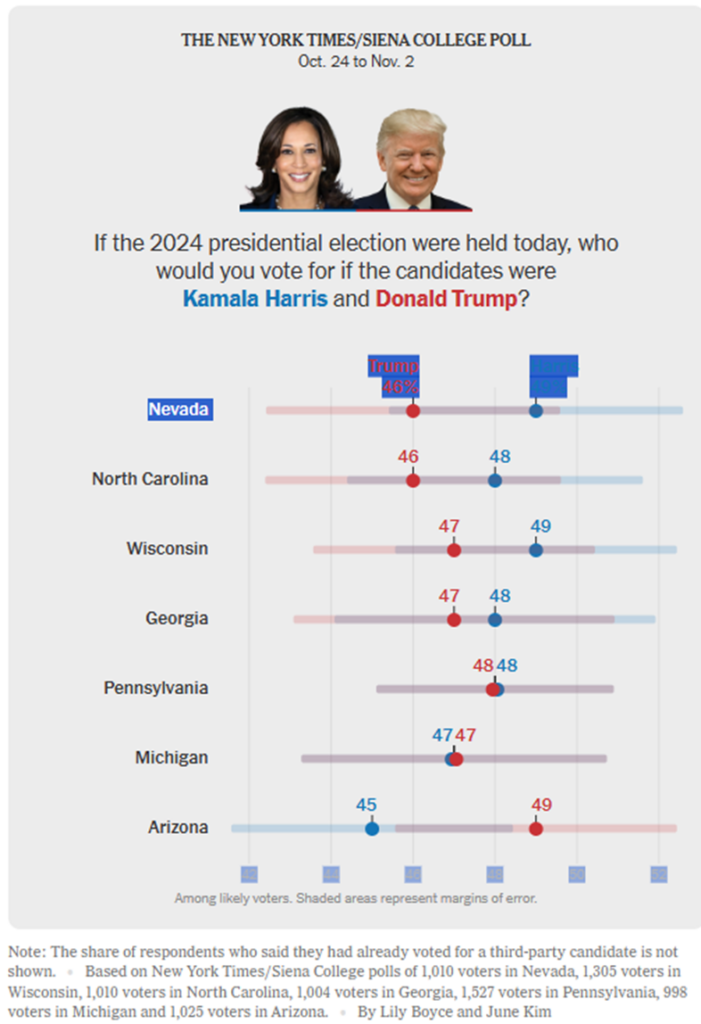In a closely contested presidential race, recent Times/Siena polls highlight a dramatic battle between Vice President Kamala Harris and former President Donald Trump in several key swing states. As Election Day approaches, Trump has made gains in Pennsylvania, narrowing Harris’s previous lead, while she has shown renewed strength in North Carolina and Georgia.

The polls reveal a neck-and-neck competition across states like Nevada, Wisconsin, and Michigan, with both candidates locked in tight races in Pennsylvania and Georgia. Notably, results in these states fall within the margin of sampling error, indicating no clear frontrunner. With more than 70 million Americans having already cast their ballots, the outcome remains highly uncertain as both candidates seek to secure the 270 Electoral College votes needed for victory.
A significant development is the shift among late-deciding voters, with Harris capturing 55% of this group compared to Trump’s 44%. The percentage of undecided voters has decreased from 16% to 11%, suggesting a narrowing field as Election Day nears.
In North Carolina, early voting rates are particularly high, with over half of voters having already participated. Harris leads among these early voters by 8 percentage points, contributing to her slight edge in the state. However, Trump maintains an advantage among voters in Arizona, where he has a strong lead among those who have already voted.
The issues driving voter priorities are also evolving. While the economy remains a top concern, abortion has gained prominence, especially in states like Wisconsin. In Arizona, immigration is becoming increasingly significant for voters.
As both candidates strategize in these final hours of the campaign, the shifting dynamics and the potential for polling inaccuracies could dramatically impact the election’s outcome. This analysis is based on reporting from The New York Times.
